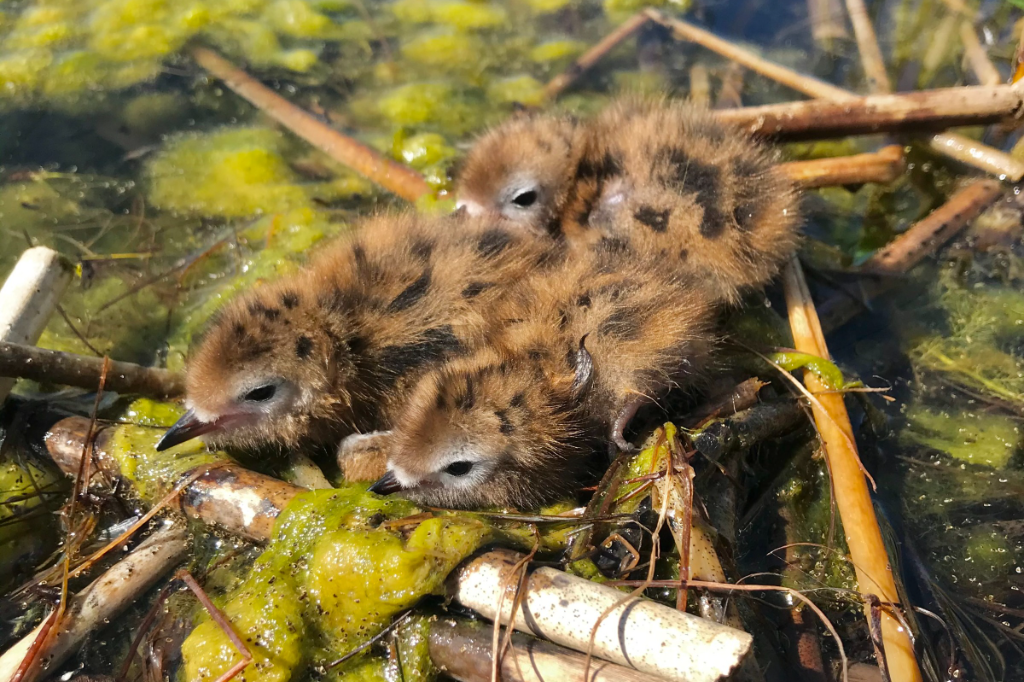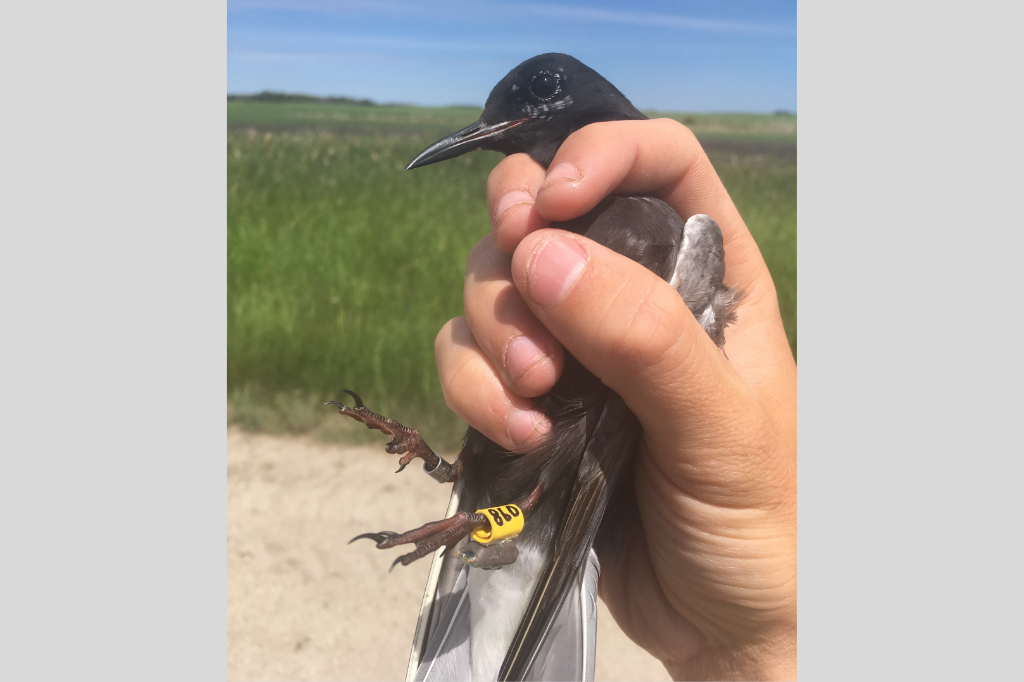By Ann E. McKellar
Linked Paper: Weak genetic structure, shared nonbreeding areas, and extensive movement in a declining waterbird by Nicholas G. Shephard, Patricia Szczys, David J. Moore, Matthew W. Reudink, Jeffrey N. Costa, Annie M. Bracey, Simeon Lisovski, and Ann E. McKellar, Ornithological Applications.
The Black Tern (Chlidonias niger) is a species of concern in several U.S. states and Canadian provinces. As with so many migratory birds in North America, this small marsh-obligate waterbird has experienced drastic population declines since the 1970s. What’s interesting is that the severity of the declines is highly variable across the species’ breeding range. Specifically, declines appear to be most drastic in peripheral parts of the range such as in the Great Lakes region and on the far eastern and western edges, with more stable populations in the prairie “core.” Environment and Climate Change Canada became interested in understanding causes of decline and why they might vary across populations, and for this we needed to gather more information about the full annual cycle movements of the species: its migration routes, important staging areas, and wintering areas. There are many different tools and technologies available nowadays for tracking small migratory animals, from extrinsic tracking devices such as GPS tags, to intrinsic tools such as genetics and stable isotopes. We chose to use light-level geolocators for our tracking study, due to their low cost, light weight, and proven record for tracking similar waterbirds. Little did we know that, simultaneously, another researcher was working to uncover population-wide structure and movement patterns of Black Terns using a different tool: population genetics. As it turns out, the results our two groups were uncovering using these distinct but complementary methods were beginning to weave together a fascinating story about the contemporary and historical movement patterns of the species. We were keen to join forces in a unique collaboration for our paper out recently in Ornithological Applications.
While our geolocator tracking data revealed distinct migratory routes, but shared winter areas, between eastern (Ontario and Michigan) and central (Saskatchewan) breeding colonies, we were frustrated by low return rates and thus small sample sizes. Since geolocators do not transmit their data, unlike some more sophisticated tags, they must be retrieved from recaptured individuals. Return rates were especially low in what is considered to be the core of the range, with only 3 of 48 recaptures in Saskatchewan compared to 16 of 40 in Ontario and Michigan combined. In Saskatchewan, we had two colonies completely abandon their breeding sites, likely due to extreme drought in 2019 and 2020, and all three of our recaptured individuals were actually found at a different breeding colony, ~2.5km from their initial breeding colony of capture. In Ontario, we discovered intriguing behaviour by a male who was tracked across multiple years. While this bird was initially captured and tagged in 2016, and recaptured at the same breeding colony in 2019, in an intervening year he flew all the way to a different site in Manitoba, where light data from the geolocator indicated breeding activity. This is fascinating evidence of extreme long-distance (~1400km) breeding dispersal and colony switching between years—information that is not often gained from archival tags such as geolocators! Taken together, these results suggest a high degree of individual movement of adults across years and help to explain low return rates.
One advantage of intrinsic tracking techniques is that they only require a single sampling event. We were able to confirm and build upon the above findings with a much larger sample of genetic data spanning the breeding range (147 individuals across 9 colonies). Not surprisingly, we found weak genetic structure and evidence for high rates of gene flow across the entirety of the breeding range. Gene flow is generally considered to be a good thing in terms of its ability to maintain genetic variation across populations, and dispersal of individuals (i.e., immigration) can help populations persist. Indeed, we hypothesize that movement of individuals from source to sink populations may be what is maintaining Black Tern populations in certain peripheral areas. However, this extensive movement can prove challenging from a conservation perspective, given that important areas and habitats required by the species are ephemeral and difficult to predict from year to year. Nonetheless, our work shows the value of taking a multi-pronged approach to tracking migratory birds and the importance of always keeping an open mind to new ideas and collaborations in science. We plan to build upon this work in the future to identify the causes, and ultimately the consequences, of breeding dispersal, with an eye to better understand the conservation needs of the species across its annual cycle.



